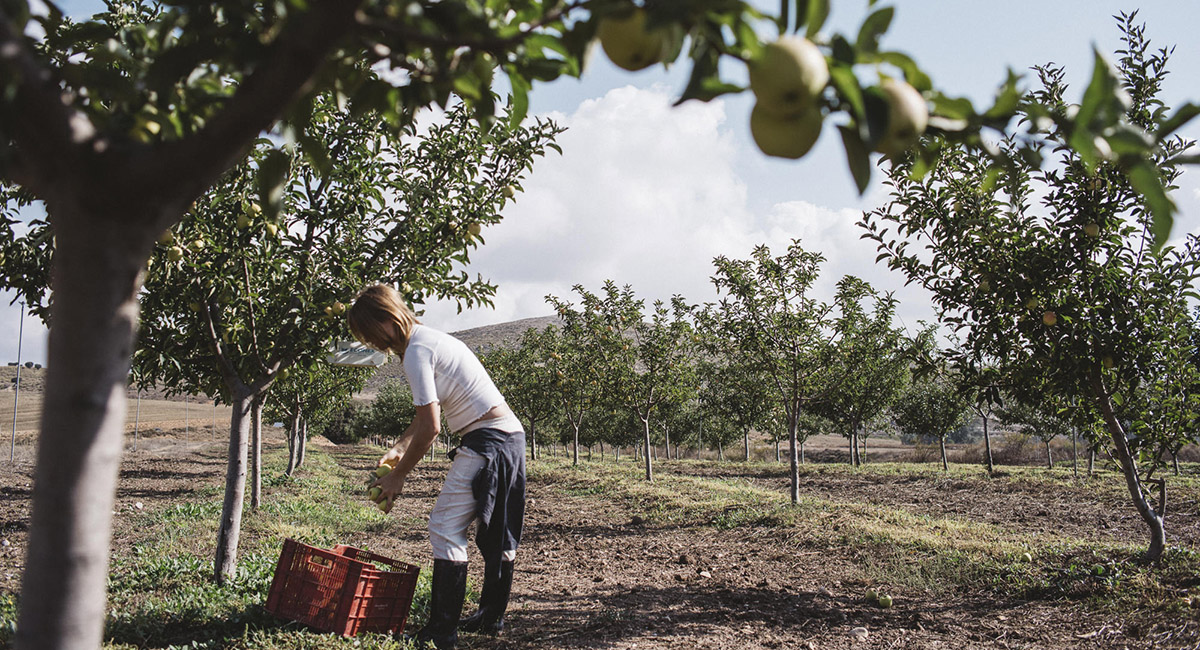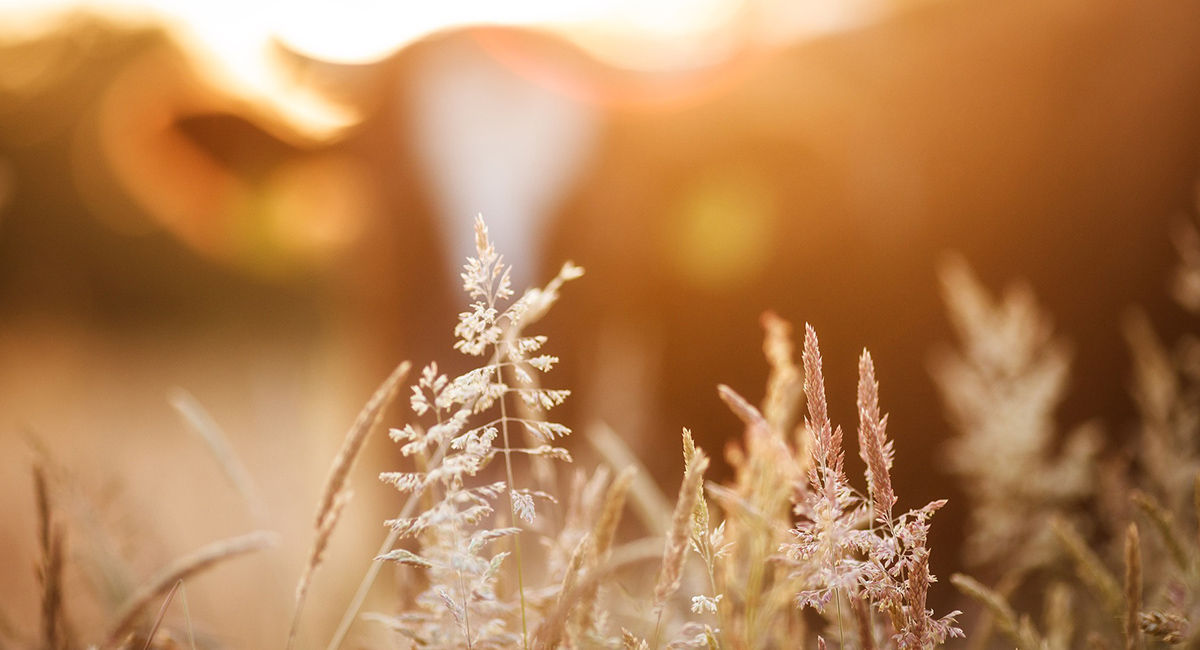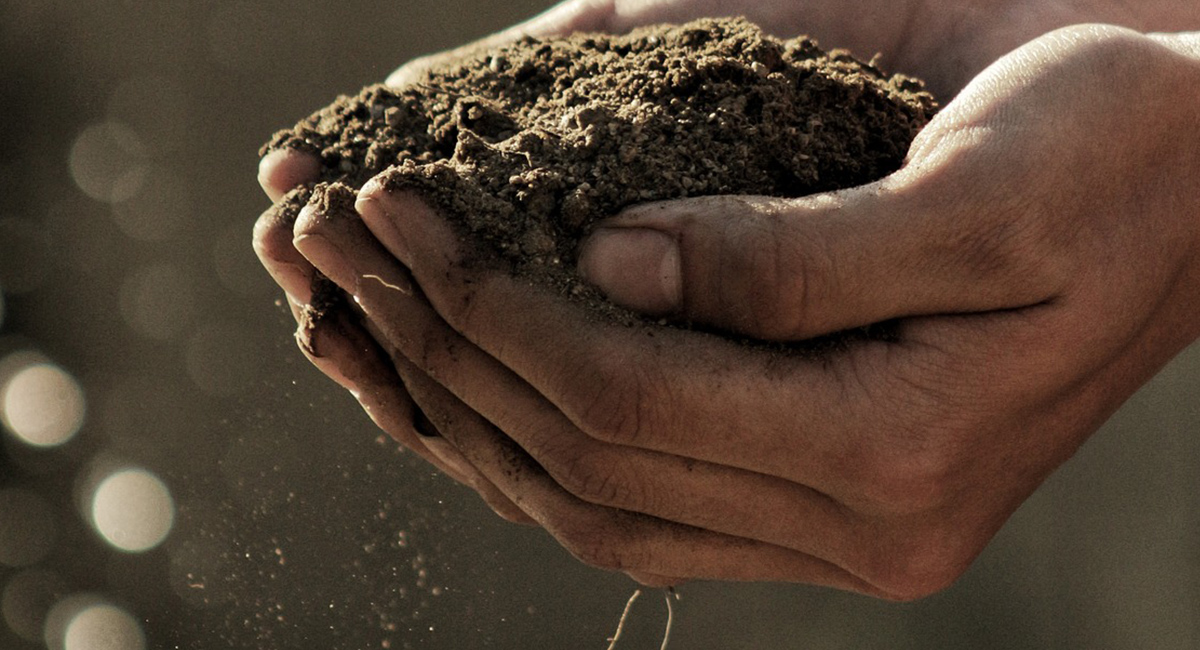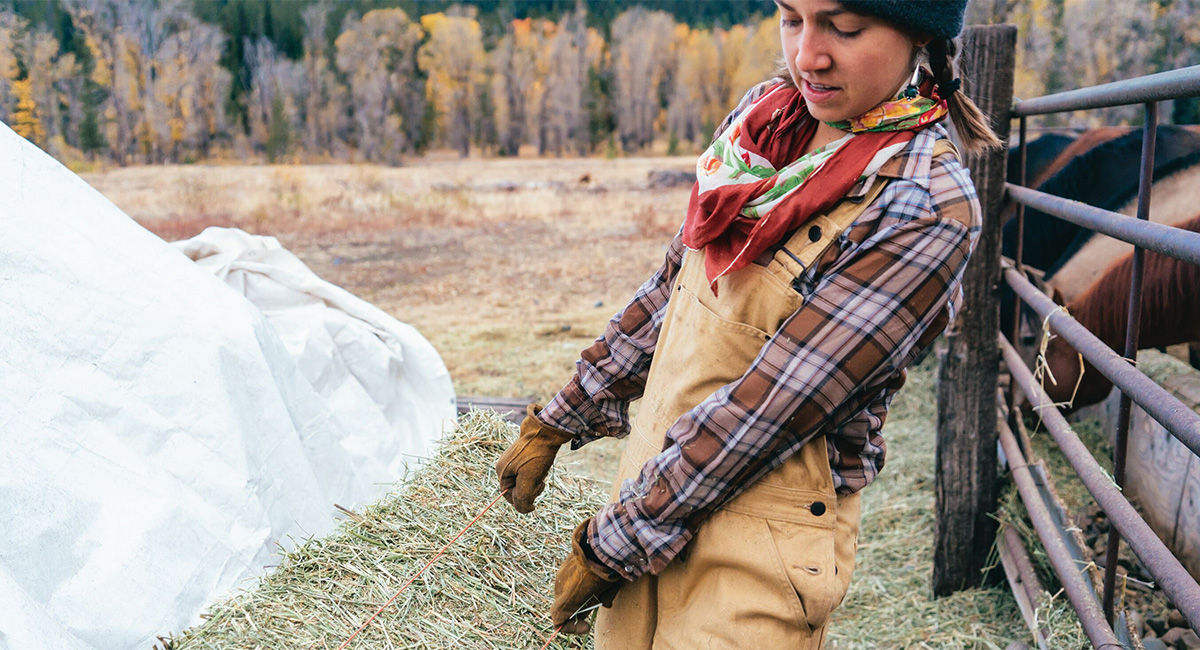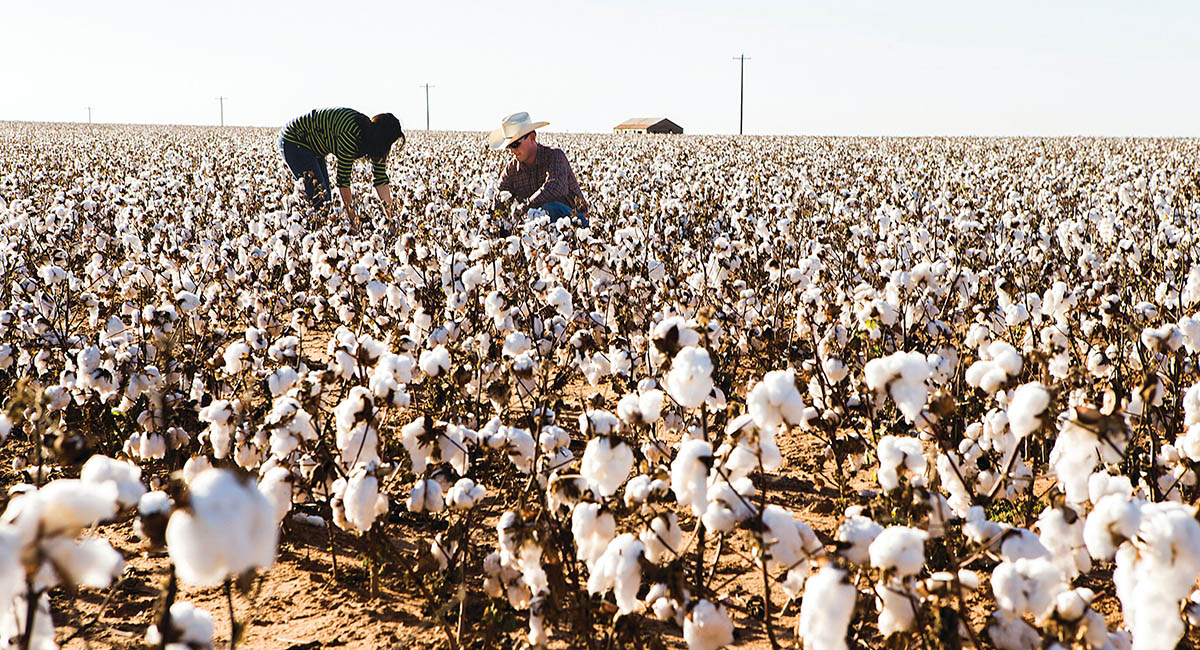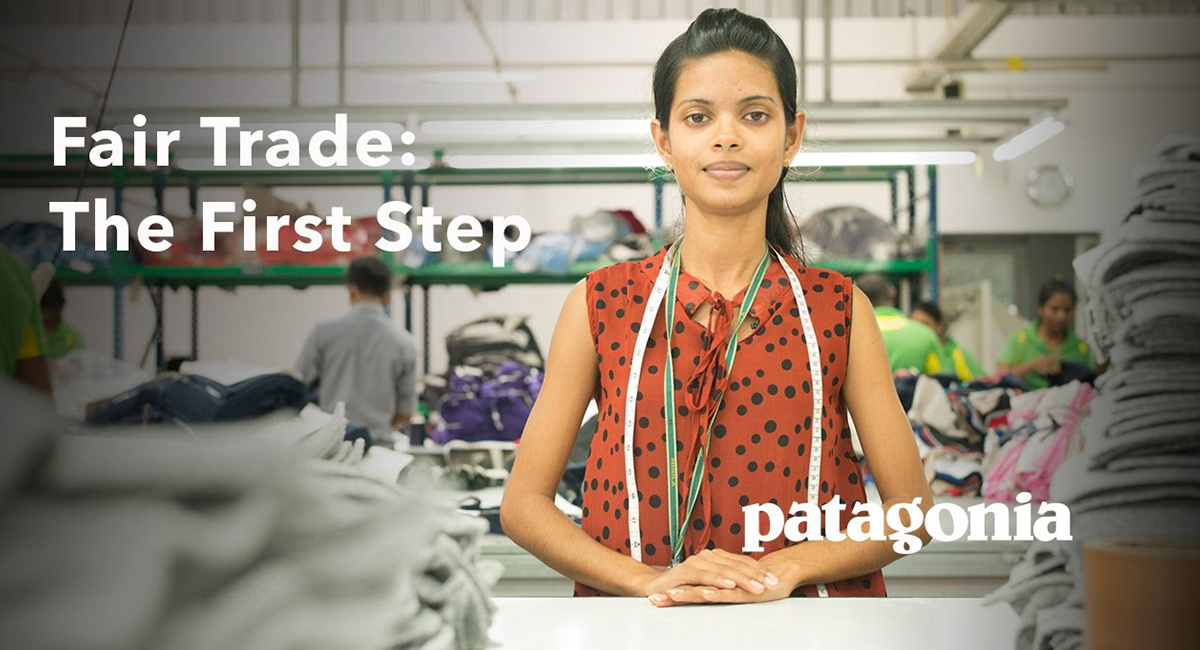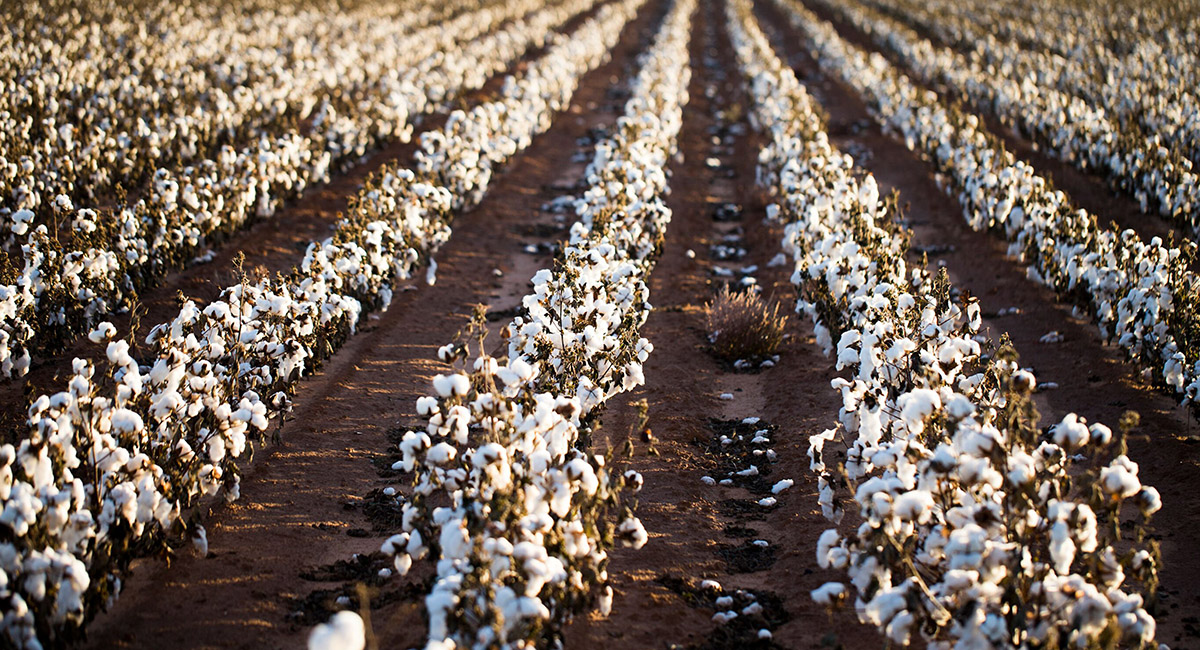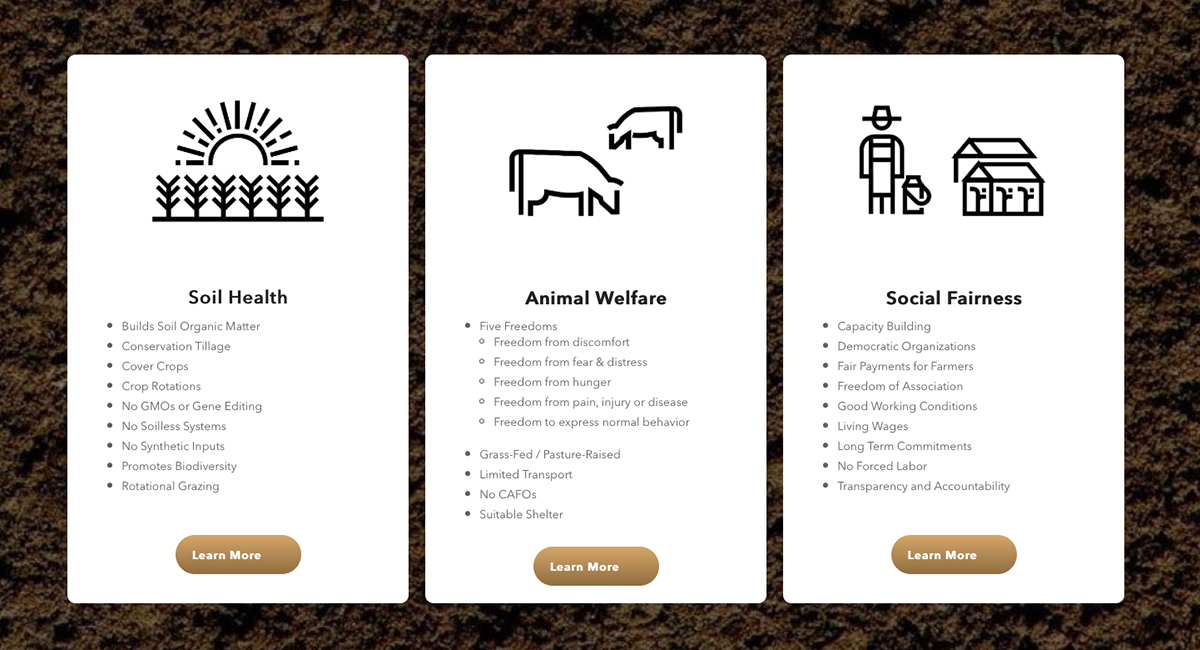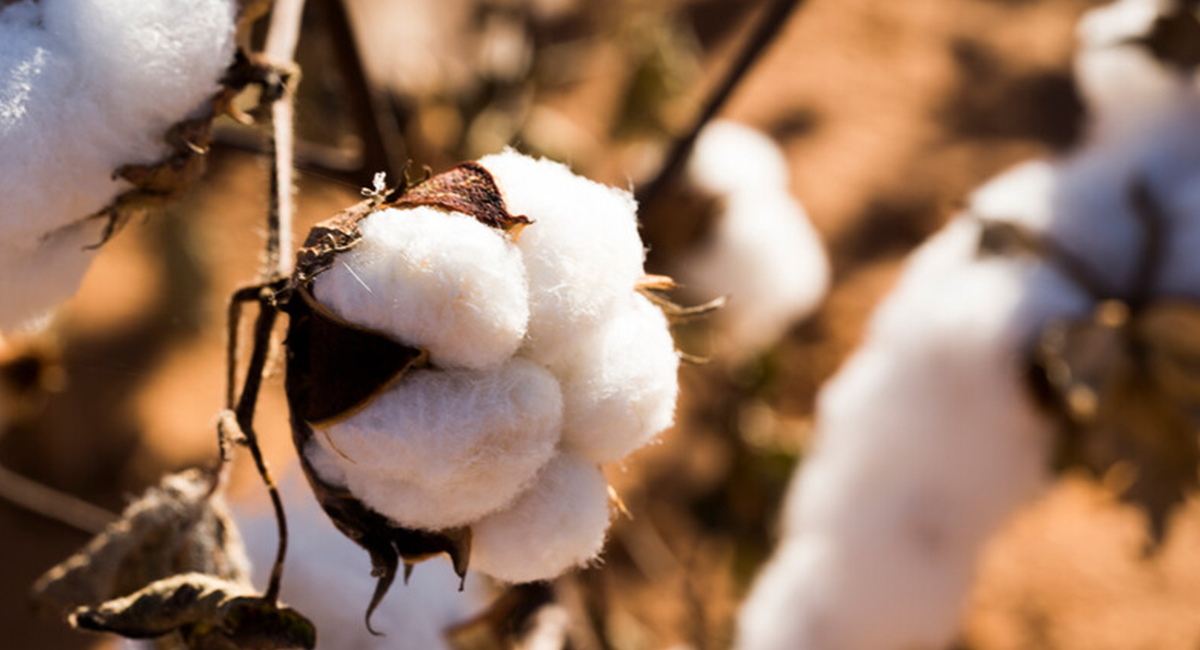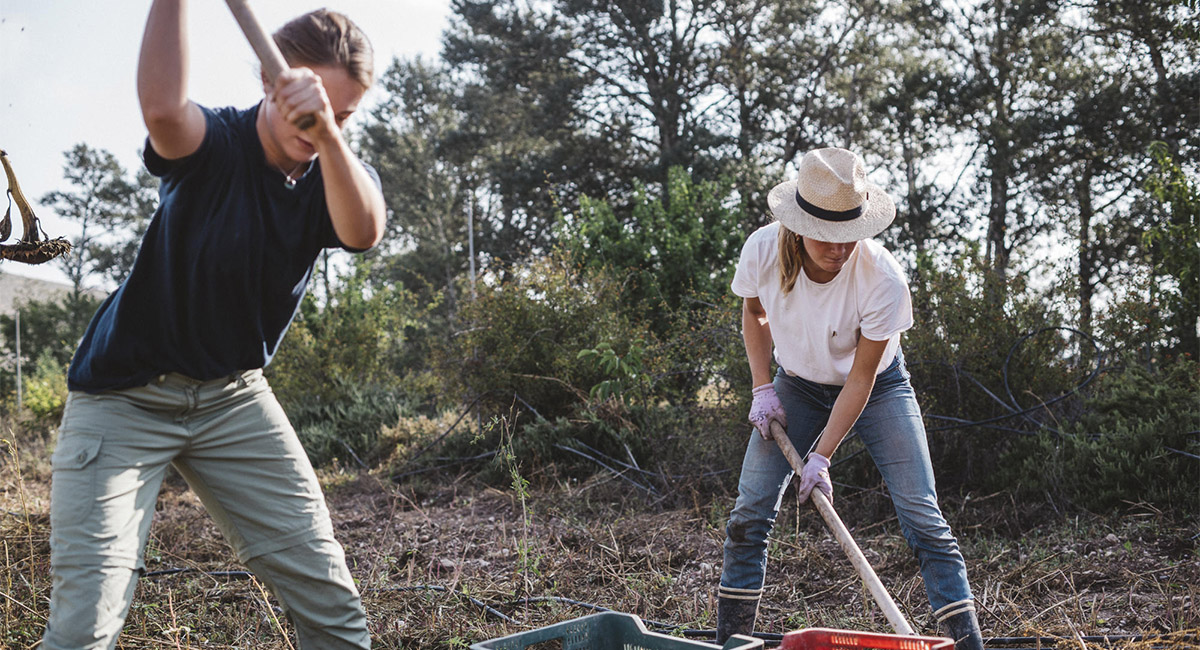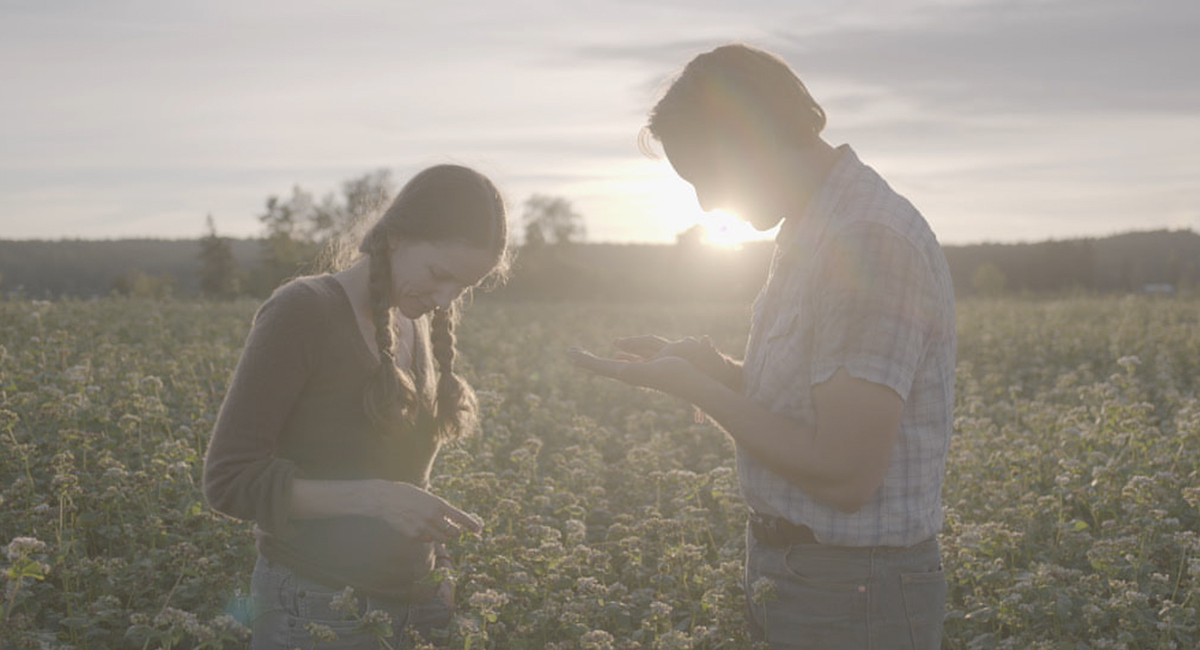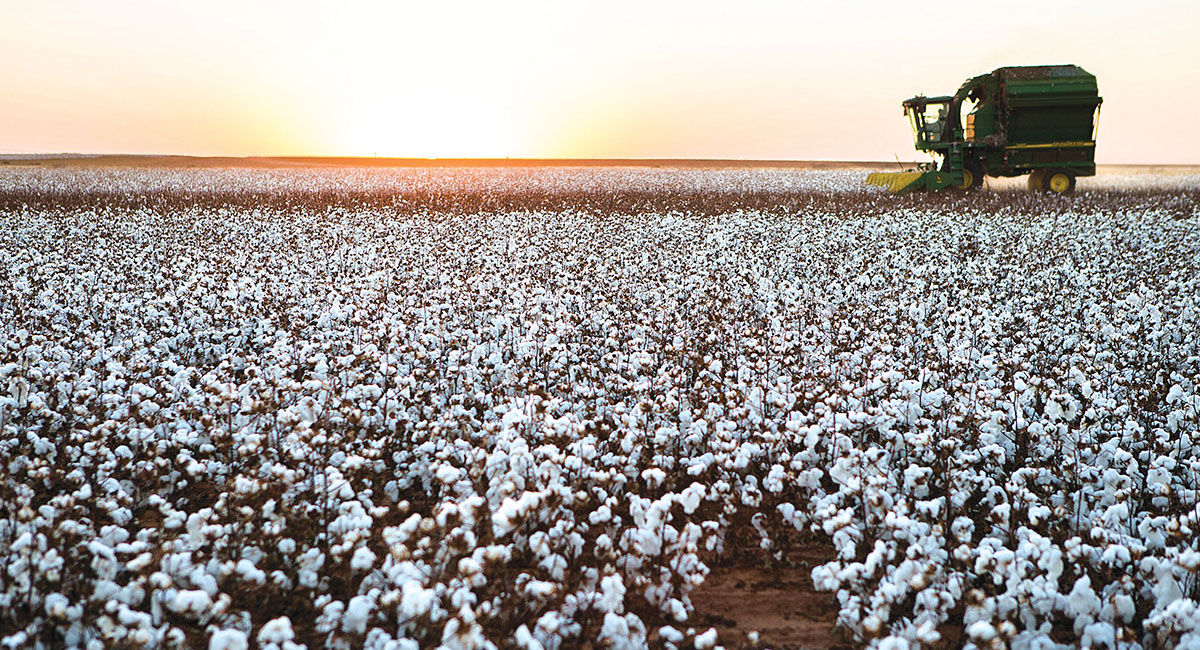“If we kill all the soils, it's over for us”. It is with these words that Yvon Chouinard, founder of Patagonia, sets the scene for his second film WhyRO part 2 released in July 2020. The observation he makes from the start of his filming is clear: a third of the surface layer of the earth is damaged today, and this could affect 90% of soils by 2050 (UN). As the founder of the famous brand of outdoor clothing and equipment Patagonia so rightly puts it, it is high time to act! Many brands and players in the same sector have also taken this direction for several years and are thus seeking to find solutions to the worrying environmental problems. Among them, Patagonia is a model in terms of the environment and in terms of positions and actions. Founded in 1973 by Yvon Chouinard, a former climber and mountaineer, the brand is indeed the face of anti-fast-fashion, putting ecological concerns at the heart of its development. His latest bet? A full shift towards regenerative agriculture. The main reason for this turning point can be summed up in one sentence: responsible for 30% of CO2 emissions, 70% of the use of fresh water reserves and 60% of the loss of biodiversity, mass agriculture is to come to an end. Faced with the appalling record of our current agricultural system, Patagonia has therefore decided to start a revolution by deploying regenerative agriculture on a large scale. If the idea seems attractive, you still have to understand what it is exactly. Between the foundations of regenerative agriculture, its application in the field, and Patagonia's strong commitments on this subject to apply and promote the practice, let us tell you the story of a real green revolution in motion!
Regenerative agriculture, for soil regeneration
What is regenerative agriculture?
"Agriculture has the unique characteristic of being able to sequester carbon. It can not only mitigate the problem, reduce its effects but above all, it can repair the damage" - Michael Pollan (journalist, author and activist)
Regenerative agriculture starts from a simple observation: our food production is the cause of global warming. The current agricultural system works like a real business, with the sole aim of producing: always more yield, for always cheaper prices. If this represents, for many, great savings in our shopping cart, the reality is, for its part, much less exciting. Everything has a price, and nature is the first impacted. In this constant search for efficiency, it is in fact what has been forgotten, and which today, by a veritable boomerang effect, alarms us. If agriculture is currently largely responsible for global warming, it could also be the most effective way to reverse the trend. No, you're not dreaming. Changing the course of global warming is not just a myth, but possible. This is not a utopian solution: regenerative agriculture is, we assure you, nothing of a fantasy.
So-called “regenerative” agriculture is rightly named, since it puts nature back at the center of agricultural concerns, focusing mainly on one thing: building soil. The observation is simple, without the soil, there is no life. The statement also works the other way around: without life, there is no soil. This may seem obvious, yet it is clear that the current state of our soils is disastrous, and that it is high time to change it . Farmers have for a long time paid particular attention to the protection of their crops, completely forgetting to have a more global vision of their actions. Chemical inputs have therefore been considered essential to guarantee harvests, but the result today is dramatic: they destroy the soil, and all the living ecosystems that go with it. Faced with this, regenerative agriculture has only one conviction: to have good yields requires the protection and restoration of the soil.
Restoring the biodiversity of soils makes it possible to increase the organic matter they contain and to reintroduce a whole cycle of life. Now, hold on tight, the whole challenge of regenerative agriculture is based on… the first 12 centimetres of soil, in other words the superficial stratum, rich in life and organic matter. It is this same layer which, when it is in good health, is able to trap large quantities of water and C02 and which could, in the long term, drastically reduce the level of CO2 present in the atmosphere and quantities of water used for our food.
We can guess your thoughts at this stage: how does this differ from organic farming, present on all the shelves of our supermarkets and well known to the general public? However, organic farming and regenerative farming differ in many ways, and the matter goes much further. Let us tell you more about this virtuous production method!
Regenerative Agriculture or Organic Agriculture
By focusing only on the environmental dimension, regenerative agriculture and organic agriculture seem to converge, which can lead to confusion on the two notions. In reality, regenerative agriculture is more of a subdivision of organic agriculture. In general, organic farming promotes cultivation and breeding practices that are more respectful of the environment by promoting natural products without synthetic chemicals or GMOs.
Regenerative agriculture, on the other hand, goes much further. It takes the best of organic farming, and expands its principles by looking at what are the best regenerative agriculture practices to promote the health of soil, animals, labor and farmers. In other words, it takes into account the agricultural ecosystem as a whole and brings it all together in a single standard to create a sustainable world. Regenerative agriculture seeks to return to ancestral ways of producing with one and the same goal: soil regeneration. And unlike organic farming, regenerative farming is not geared towards conservation, but rather towards improvement, especially for future generations. The goal is not to maintain soil quality, but to improve it to increase the organic mass they contain and make our production methods healthy and viable in the long term.
That being said, a question then arises: concretely, how does this translate on the ground... and even why not for you? Whether you are a farmer or simply an inveterate Sunday gardener, you will discover simple methods that you can put in place, at your scale.
Criteria for engaging in regenerative agriculture
Regenerative agriculture is based on principles entirely focused on soil health and the development of organic matter. These principles are the focus of all farmers who want to establish regenerative crops. They also help to better understand why this method is so popular with fervent defenders of the environment. We can, in fact, find all the dimensions essential to improving the current climate situation, namely:
Regenerate soils
- Improve ecosystems
- Promote biodiversity
- Improve soil functions
- Trap C02
- Consider agriculture and its environment as an all
- Developing farms according to the regional context
All these principles translate into concrete actions. On paper, you may think this is a no-brainer and that we could quickly turn all of our current farms into a regenerative crop. However, the reality is much more complex. Regenerative agriculture takes patience. The operation must evolve, step by step, to successfully refocus on the essentials and be able to observe a change in the state of health of the soil. So if you too are planning to change things, here is what you can put in place (or at least what you can share around you):
- Do not use fertilizers or pesticides but only compost
- Place plant covers to increase soil organic matter, prevent erosion and trap C02
- Plant different crops in one and the same place
- Plant trees and plants that promote the life of insects and pollinators
- Do not leave your soil unexploited but find alternative productions
- Use grazing
This last point is very important because regenerative agriculture conceives agricultural cultivation and animal farming as a whole that should no longer be dissociated. In a properly functioning ecosystem, plants and animals must live in harmony and complement each other to create a new virtuous ecological loop.
Even before the financial question comes to the fore, let us anticipate your thoughts. Ultimately, farmers who have implemented regenerative agriculture have been able to measure yields between 6 and 8 times higher than those previously obtained with industrial agriculture, and on much smaller surfaces! Bonus point, this type of agriculture also requires much less maintenance, which ultimately represents a significant saving in labour.
As you will have understood, regenerative agriculture appears to be THE miracle solution in many aspects . Already adopted by fervent defenders of the environment, it also benefits from the growing importance of environmental issues. In recent years, many companies have also chosen to adopt more responsible and more respectful practices. However, if there is one sector which, overall, has long been disconnected from all these issues, it is the textile industry. Today, pushed to act in particular at the request of worried consumers, there are many brands that hide behind well-rehearsed communication but which, in fact, do not do much. However, one brand stands out: Patagonia, which took the opposite course a long time ago, making its ecological commitment the guideline of its operation.
Patagonia: a pioneer in regenerative agriculture
Patagonia and its historic commitment to the environment
Patagonia is not in its infancy when it comes to commitment. A pioneering brand, it has established itself as a benchmark for eco-designed clothing. The environment has always been at the heart of the brand's thinking, driven by the unfailing commitment of its founder, Yvon Chouinard. Even before turning to textiles, this climbing expert distinguished himself in climbing equipment with his company Chouinard Equipment. The brand was, at the time, the main supplier of climbing equipment in the United States, which did not prevent Yvon Chouinard from taking ambitious measures. In order to protect the rock, he decided to stop producing pitons (although his brand's flagship product) and to develop alternatives (such as aluminum nuts). With Patagonia, this great nature lover has remained on the same line of conduct, developing a bold brand and symbol of success. This is also an example that inspires many entrepreneurs who wish to reconcile economic objectives and ecological values.
Acting and making things happen have always been part of Patagonia's DNA. Known for developing ambitious and, at first glance, risky projects, the brand first distinguished itself by taking the bet on organic cotton in the 90s. While no company on the market believed in it, Patagonia gave up completely the use of conventional cotton in less than 6 years. With a production of 100% organic cotton, the observation was clear: the brand recorded a reduction of nearly 45% of CO2 emissions, and 87% of water consumption, compared to the production of conventional cotton. However, even in the face of these more than encouraging results and at a time when environmental issues can no longer be ignored, only 1% of world cotton production comes from organic cotton, a sign that progress remains to be made.
But then, why not raise awareness among other brands in the sector? However, it is not for lack of trying, since the brand has been encouraging other companies for years to start producing organic cotton. It is in this dynamic that they participated in 2002 in the creation of Organic Exchange, a non-profit association aimed at increasing the sales of organic cotton clothing. Renamed Textile Exchange in 2010, the association promotes organic cotton and has expanded its role to include organic, recycled or bio-based fibres. This association seeks to promote exchanges between the actors of the entire production chain, to inform professionals and consumers alike, to design new sustainable business models and to find solutions for the major problems of the textile industry. The association now has more than 197 members, and in 2009 represented a cumulative turnover of 755 billion dollars.
On the producer side, no one is left out either. Mostly supporters of this type of initiative, producers often give up on transforming their production for financial reasons. It takes, in fact, 3 years on average to obtain certification and officially produce organic cotton, which can be a hindrance for many farmers. During these 3 years, farmers must make all the changes necessary to transform their farm, which generates high costs. However, they do not have the possibility of selling their cotton with organic certification, and have to face all the conventional cotton producers who charge lower prices. It is to support these farmers that Patagonia launched the "Cotton in Conversion" collection in the spring of 2020. This collection only uses cotton that does not yet have certification, coming from producers who have taken the gamble of embarking on the 'Organic Agriculture.
But organic cotton is not enough for the brand, which sees further. In the fall of 2020, 84% of their polyester is recycled, which represents an 8% drop in C02, the equivalent of 5,000 tonnes at their production scale. The brand has also self-imposed a 1% for the Planet tax to support environmental associations. "We try to look at every element of our supply chain to see how to make positive changes" - Helena Barbour (Head of Sportswear, Patagonia)
As a last combat component, Patagonia also places a lot of importance to the operation of its entire supply chain. Not limited to raw materials, the brand has partnered with Fair Trade USA and has been manufacturing Fair Trade Certified clothing since 2014. The brand now offers more models with this certification than any other brand in the sector. And since figures are sometimes worth 1,000 words, this represents 83% of their range which is made with this certification. The latter is based on fairer remuneration for all the brand's partners thanks to a system of bonuses. With each certified product purchased, Patagonia agrees to pay a bonus directly to factory employees. At present, more than 50,000 workers are concerned by this initiative, in more than 10 different countries.
Patagonia's interest in preserving the environment has therefore grown over the years, evolving in step with global concerns. More recently, she turned to regenerative agriculture, making this method her priority for the years to come. Patagonia's goal is clear: to develop viable regenerative practices for the textile industry and food system. Regenerative agriculture appeared as an obvious choice for the leaders of Patagonia, themselves convinced that regenerative agriculture is only the logical continuation of their ecological commitment.
Why did Patagonia choose to turn to regenerative agriculture?
When Patagonia developed its first organic cotton in the mid-1990s, it was clear to the brand that this would be just one step in their long journey to protect the planet through agriculture. The brand has since evolved a lot, but above all learned a lot from its previous experiences and its many collaborations. Patagonia is well aware that regenerative agriculture is not a silver bullet to all our problems, but it nevertheless represents an exciting opportunity to reduce our environmental impact and undo the damage we have already caused. “The best way to grow food and fibre is through regenerative agriculture." - Rose Marcario (CEO of Patagonia) (Video 1)
According to The Carbon Underground (an international organization promoting regenerative agriculture since 2013), each hectare of restored agricultural land reduces the amount of CO2 present by 3 tons in the air. With more than 5 billion cultivated land in the world, this would represent 15 billion tons of CO2, which would put us on the right track to achieve the objectives highlighted by the United Nations and the COP21 agreements made in 2015 in Paris. These figures quickly give us the keys to understanding the current enthusiasm surrounding regenerative agriculture and Patagonia's determination in this regard.
However, the brand is fully aware that business leaders have an important role to play in raising awareness among leaders and encouraging them to take new initiatives. It is for this reason that she has become the spokesperson for regenerative agriculture, convinced that a large-scale commitment is possible. This transition to regenerative agriculture was therefore made naturally, as obvious to the managers of the brand who are constantly interested in new eco-responsible production techniques.
No more greenwashing, beautiful advertising campaigns that hide much darker realities and empty words: Patagonia is committed and informs highlighting all the actors who, like them, really make things happen.
Patagonia and the Regenerative Organic Alliance
It is precisely to make things happen that Patagonia joined forces in 2018 with the Rodale Institute, a pioneer in research on regenerative agriculture, to create a coalition , the Regenerative Organic Alliance. With this alliance, Patagonia was able to create a team of experts to set standards in regenerative agriculture. From this alliance was born the Regenerative Organic Certification (ROC).
This certification has been piloted for 2 years now by Patagonia, which notably offers significant financial support to its members. Phil Grave is a board member of the ROC. Director of Patagonia Tin Shed's venture capital fund, he is responsible for revenue allocated to regenerative agriculture (which amounts to $75 million) and oversees the brand's involvement in the ROC.
Currently, more than 550 farms are part of this very demanding program. The certification is based on 3 pillars:
- Healthy soil
- Animal welfare
- Fairness for producers
With this certification, Patagonia was even able to develop a new project: Patagonia Provisions. On this sales platform, Patagonia sells food from regenerative agricultural production that has obtained certification, and therefore rethinks the way we think about our food chain, highlighting products from regenerative agriculture. "We make products that show there is another way forward" - Brigit Cameron, General Manager of Patagonia Provisions
It is therefore a new way of consuming that Patagonia constantly seeks to promote. Their ultimate goal? Launch clothes with this certification. A rather auspicious project, thanks to the implementation of pilot cotton in India.
Patagonia and India's pilot cotton implementation, a world's first
You're probably wondering why cotton is such an important issue for Patagonia. The explanation is simple. Cotton corresponds to 40% of world textile production, represents 2.5% of cultivated land and is responsible for 20% of water pollution in the world (World Bank). The production of a single cotton T-shirt requires up to 2,700 liters of water, and 16% of the pesticides used worldwide are destined for conventional cotton production. In other words: cotton depletes and contaminates our water resources while destroying ecosystems.
We agree, all these figures make your head spin, but we must not lose sight of them, and that should make us react. Do you really need that new t-shirt? And if so, why not turn to brands that use eco-friendly cotton?
To accelerate the movement, Patagonia has decided to pilot the first crop of cotton produced according to the strictest standards imposed by the Regenerative Organic certification. In other words: test on cotton crops the Regenerative Organic practices that they have put in place in order to produce certified cotton, always with the aim of rehabilitating the soil, respecting animal welfare and improving the lives of farmers.
And the brand did not launch this project anywhere: the experience, the first of its kind, takes place in partnership with 150 small cotton farms in India... the largest cotton producer in the world! A real success, especially in view of the increase in yields, this experience made it possible to launch the first Patagonia collection with ROC certified cotton, understand Road To Regenerative.
This transition happened naturally for Indian producers who finally returned to production techniques similar to those used by their ancestors. They have implemented regenerative agriculture methods, in particular by developing other plants alongside cotton, such as soybeans, peanuts and chickpeas, or by using compost exclusively instead of liquid fertilizers.
If, however, you still doubt the benefits of regenerative agriculture, Patagonia invites you to travel for a moment to Spain, to discover the farm of Alfonso Chico de Guzman and Yanniek Schoonhoven.
La Junquera, a Spanish success story
Alfonso and Yanniek are the owners of La Junquera, an organic and regenerative farm paving the way to this new way of farming. This example highlights the great potential of regenerative agriculture and provides all the tools needed to successfully transition to healthier soils and more efficient land management. Based in Murcia, southern Spain, Alfonso decided to switch to regenerative farmers after seeing a significant rise in stones in the soil in the area, which prevented all farmers from cultivating their land. This increase is explained by the degradation of the quality of the soil and the major problems of drought, which strongly affect the south of Spain.
Although their production is not yet 100% regenerative, Alfonso is working hard on it and the results are convincing. The farm now mainly produces cereals from old varieties of seeds, which are more resistant to the vagaries of the weather, which allows Alfonso and Yanniek to stabilize the harvest, even in years when water is scarcer. In parallel, they also developed other crops in order to diversify the ecosystems. They therefore also produce small quantities of almonds and pistachios which are then sold through a local company. Natural areas have also been created to promote the biodiversity of ecosystems, and cereal production and livestock farming are evolving together. In order to better control water management, ditches have been dug around the fields in order to stop the water, retain it and redistribute it as well as possible.
“The channels collapse and do not keep the water”. This is what Alfonso could hear before he started. Result: the rills now contain a significant organic layer (which represents an incredible amount of nutrients) and allow the water to be redistributed efficiently. He affirms that by increasing the quantity of organic matter contained in the surface stratum of the soil, if only by 1 mm over one hectare, the earth would be able to retain millions of liters of additional water. Even if 1 mm may not seem like much to you, the benefits brought by this additional quantity are not anecdotal and such a result may require several years of work.
Switching from conventional agriculture to regenerative agriculture requires investment and to say the opposite would be a lie. But all the farmers who have chosen to embark on this great adventure have no regrets and are now carriers of new sustainable, respectful and productive methods. Still little known to the general public and consumers, regenerative agriculture now needs visibility in order to gain momentum. Patagonia has once again taken up the issue to spread the message!
Committing to Inspiring Others, Patagonia's Leitmotiv
Toward a Changing Mindset
When Patagonia embarked on regenerative agriculture more than two years ago, many didn't believe it. Consumers and farmers themselves were not aware of all the virtuous issues that were hidden behind this practice.
Over the past few years, mentalities have changed a lot and so have individual consumption habits. Today, the environmental situation is considered very worrying by 61% of French people to the point of asking for “radical changes in order to consume and produce less, but better” (Sport-Guide.com).
Consumers are no longer satisfied with what the big manufacturers put forward, they want to understand, be informed and participate in the changes. Farmers have also taken matters into their own hands. Aware of being on the front line facing the consequences of global warming, many have turned to new production methods, farms that are more respectful of the environment. While not many have yet made the choice of regenerative agriculture, Patagonia is putting everything in place to support all those who would like to embark on this great adventure.
Riding on this current momentum, many large groups have also jumped on the bandwagon. This is particularly the case with Danone, which has set up various programs and partnerships to support regenerative agriculture. Their goal is simple: ensure all the raw materials produced in France through regenerative agriculture by 2025.
“My vision is that of regenerative agriculture. Organic is part of it, but it is not the whole solution” (L'Express 2018) (Emmanuel Faber, CEO of Danone).
Patagonia, "We don't want to do this alone"
Patagonia wants to act and make things happen, but the brand does not want to do it alone. If the levers of action by which Patagonia is committed to regenerative agriculture are not lacking, a very important dimension has been left out: awareness. Raising awareness of current issues and regenerative agriculture is a priority for Patagonia, which seeks to support consumers and farmers towards a new model.
The brand has therefore created many films on the issue and organized two international focus groups in August in order to enable all to inform themselves on the subject and discuss with experts. Moreover, the brand wishes to support educational projects all around the world, in order to develop alternative agriculture.
The Junquera farm in Spain, in this regard, created the“ Regeneration Academy” in order to enable students from around the world to comme and write their thesis directly within the farm. The goal of the initiative is to inform and move this new generation who will hold high positions in the future and will be able to take innovating measures to move things up.
Patagonia also supports ambitious projects, here, in France. It's in notably the case of the “Domaine du Possible”, a French project born in Arles unique in its ideas. This agricultural exploitation, organic since 1972, has turned towards agroecologies in 2014 and continued to develop its project. The “Domaine du Possible” is an agricultural and educational association which comes from those initiatives and was created in 2015. We found, there, a prep school and a high school where kids evolve in the heart of biodiversity and in contact with the animals, but also an agricultural university where future regenerative agricultural professionals are formed. Acting and informing are the centre of the farm's motivations, which tries to redo at a local level what Patagonia does at an international level.
You have certainly made some discoveries by reading this article, and it isn’t surely the last time that you will hear about regenerative agriculture.
Other than what you have learned, it now consists of questioning yourself. What can we do, at our level, to move things? We all have a role to play in this transition, and it is also to us as consumers, taking the right decisions. Buying is in some ways our way of voting. Do you favour second-hand ? They are t-shirt less to produce and resources kept. You take care of the material chosen for your clothes? You encourage big brands and producers to turn towards more eco-friendly productions.
To summarize this simply : consume less, but better. You would like to go further? Nothing stops you. A vast range of possible actions exist. A visit to Patagonia’s website, will make you realize how much you can do. Wander around the different articles, research on the “ activism” page to discover how you can help on Patagonia Action Works, and go outside to see what nature has to offer. You will realize how much acting is necessary.
You now know everything about the commitments of Patagonia towards the environment. You have been inspired and which to now consume in a better way ? Contact our team directly on the phone on the +33 ( 0) 1 84 67 14 24 ( free calls) or through our Help Center ! We will be happy to advise on our numerous eco-designed products and/or orient you through the existing certifications.
➤ Patagonia Clothing - Shop
Crédit photos (dans l'ordre d'apparition): (1,4,5,6,7,10,11,12,13)©Patagonia - (2)©Intuitivmedia/Pixabay - (3)©StockSnap/Pixabay - (8)©regenorganic.org - (9)©Jarrah Lynch/Patagonia
